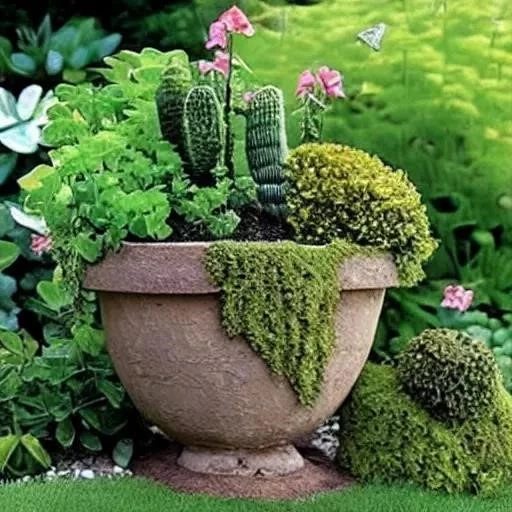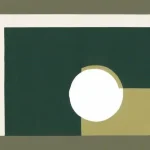In the verdant tapestry of any thriving garden, the unexpected sight of a shattered terracotta pot often evokes a sigh of resignation, quickly followed by the instinct to discard what appears to be mere waste. We’ve all been there: a clumsy knock, a sudden fall, and what was once a vessel of life becomes a collection of seemingly useless shards. Yet, what if these fragments weren’t destined for the landfill but rather held the secret to unlocking unprecedented creativity and functionality within your botanical haven? Prepare to have your perceptions fundamentally reshaped, as we delve into the surprising, sustainable, and utterly ingenious ways a broken flower pot can transform your garden from overlooked corners to vibrant focal points.
This isn’t merely about recycling; it’s about reimagining, repurposing, and ultimately, reclaiming value from what conventional wisdom deems broken. By embracing a mindset of resourcefulness, gardeners worldwide are discovering that these humble fragments possess a remarkable versatility, offering solutions that range from critical practical applications to breathtaking aesthetic enhancements. From ensuring robust plant health to crafting whimsical miniature landscapes, the potential residing within these ceramic pieces is truly astounding, promising to elevate your gardening endeavors with an optimistic, forward-looking approach that champions sustainability and innovative design.
| Category of Use | Description & Benefits | Practical Application | Creative Example |
|---|---|---|---|
| Enhanced Drainage | Prevents waterlogging and root rot in potted plants, ensuring healthier growth. Provides excellent aeration for soil, crucial for microbial activity. | Place larger shards over drainage holes in new pots before adding soil. | Layering at the bottom of raised beds for improved water flow. |
| Decorative Elements | Adds rustic charm, texture, and visual interest to garden beds and pathways. Can be used to create intricate patterns. | Edging for flower beds, stepping stones, or mosaic pathways. | Crafting a “pot shard path” through a herb garden. |
| Miniature & Fairy Gardens | Broken pieces are ideal for creating steps, walls, and pathways in tiny landscapes, adding an enchanting, whimsical touch. | Building multi-tiered levels or tiny fences in a container garden. | Designing a “spilled pot” fairy garden, with succulents growing out of the broken vessel. |
| Plant Markers & Labels | Durable, weather-resistant, and aesthetically pleasing alternative to plastic markers. Easy to write on with permanent ink. | Writing plant names on flat shards and inserting them into soil. | Creating a beautiful, uniform set of herb garden labels. |
| Pest Deterrent & Habitat | Provides shelter for beneficial insects (e.g., toads, beetles) while offering a barrier against slugs and snails. | Inverting a large shard near a plant base to create a toad house. | Ringing delicate plants with sharp edges to deter slugs. |
| For more innovative garden ideas, visit: Gardening Know How ー Repurposing Broken Pots | |||
The Foundational Advantage: Superior Drainage and Aeration
One of the most foundational and incredibly effective applications for these fragmented vessels lies in their remarkable ability to enhance drainage, providing an indispensable service to your garden’s delicate root systems. By strategically placing larger shards over the drainage holes of new pots or at the bottom of raised beds, you prevent soil from washing out while simultaneously creating essential air pockets. This simple yet ingenious trick ensures that excess water can escape freely, mitigating the dreaded issue of root rot which often plagues overwatered plants. “This practice isn’t just about saving a broken pot; it’s about fundamentally improving the health and longevity of your plants,” explains Dr. Elena Petrova, a renowned horticulturalist and ardent advocate for sustainable gardening practices. “Good drainage is the cornerstone of robust plant growth, and utilizing broken terracotta offers a naturally porous, incredibly effective solution.”
Artistry from Adversity: Decorative Flourishes and Whimsical Creations
Beyond pure utility, broken pots unveil a boundless canvas for aesthetic expression. Imagine transforming rough edges into elegant garden borders, skillfully arranging shards to define pathways, or even creating stunning mosaics that add a unique, personalized touch to your outdoor spaces. Each piece, having once served a singular purpose, now contributes to a larger, more intricate design, echoing the philosophy that beauty can indeed emerge from imperfection. The “spilled pot” garden, for instance, where a fragmented pot lies on its side, seemingly overflowing with vibrant succulents or cascading flowers, has become a popular and visually arresting trend, demonstrating how a perceived mishap can become the very foundation of an artistic statement. These imaginative installations inject a sense of playful creativity, elevating your garden’s appeal and sparking conversations.
Crafting Tiny Worlds: Miniature and Fairy Gardens
For those captivated by the charm of miniature landscapes, broken pots are an absolute godsend. Their varying sizes and curved shapes are perfectly suited for constructing tiny steps, miniature walls, or even subtle changes in elevation within a container fairy garden. A large shard can become a majestic mountain, while smaller pieces form stepping stones leading to an unseen fairy dwelling. “Creating these diminutive worlds with repurposed materials is incredibly rewarding,” notes Marcus Thorne, an eco-conscious landscape designer known for his whimsical garden installations. “It’s about seeing potential where others see detritus, crafting narratives with every carefully placed fragment, and fostering a sense of wonder that resonates with all ages.” This transformative power, converting discarded earthenware into enchanting realms, truly underscores the optimistic potential inherent in sustainable practices.
Beyond the Obvious: Ingenious Hacks for Gardeners
The utility of broken pots extends to surprisingly practical, everyday garden hacks. Flat shards, for example, make incredibly durable and attractive plant markers. Simply write the plant’s name with a permanent marker, and you have a weather-resistant label that blends seamlessly with the natural environment, far outperforming flimsy plastic alternatives. Furthermore, larger, inverted pieces can provide invaluable shelter for beneficial garden creatures like toads or ground beetles, helping to naturally control pests. Conversely, positioning sharp-edged pieces around the base of vulnerable plants can act as an effective barrier against slugs and snails, demonstrating a clever, chemical-free approach to pest management. These ingenious applications not only reduce waste but also contribute to a healthier, more balanced ecosystem within your garden.
Embracing a Future of Resourcefulness
The journey from discarded fragment to indispensable garden asset embodies a powerful message of sustainability and ingenuity. It challenges us to look beyond immediate appearances, encouraging a deeper appreciation for the inherent value in materials often destined for the trash heap. By embracing the creative reuse of broken flower pots, we’re not just tidying our gardens; we’re actively participating in a global movement towards greater resourcefulness, inspiring others to view waste not as an end, but as an exciting new beginning. So, the next time a pot tumbles, resist the urge to lament its demise. Instead, envision the myriad possibilities, the artistic potential, and the practical solutions waiting to be unearthed. Your garden, and indeed the planet, will undoubtedly thank you for this forward-thinking, brilliantly sustainable choice.






